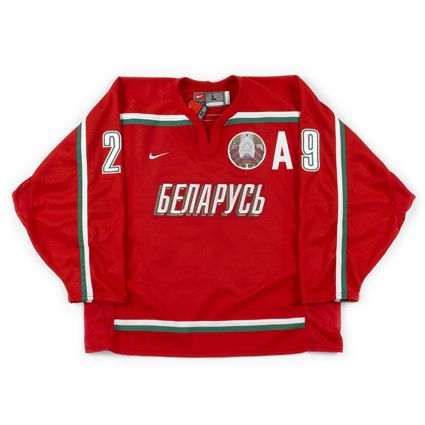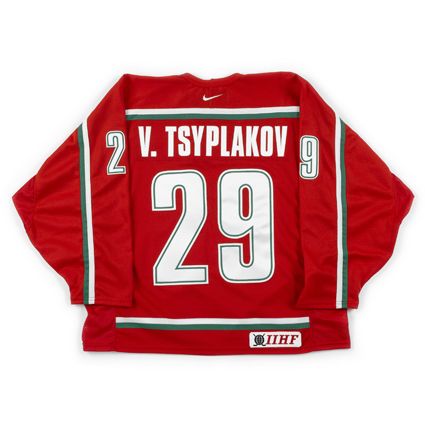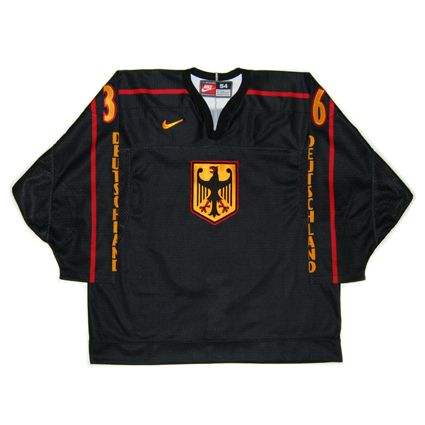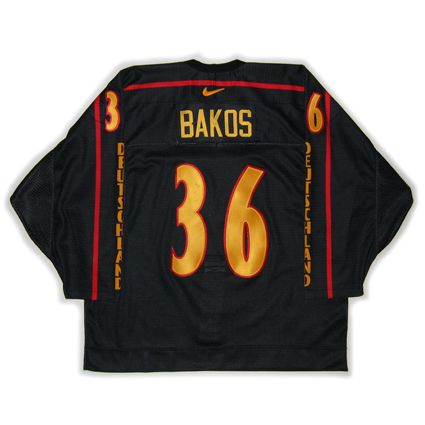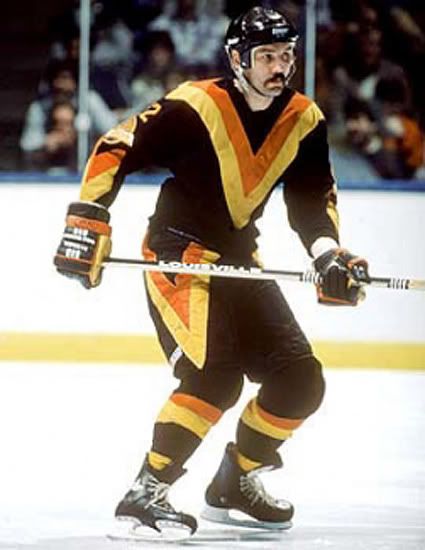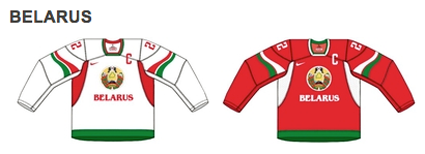
Saturday, February 6, 2010
2002 Belarus National Team Vladimir Tsyplakov Jersey
The third highest seeded team in Group C at the 2010 Vancouver Olympic Men's Ice Hockey Tournament is Belarus.
Here is a look at the jerseys that Belarus will be wearing in the 2010 Olympics in Vancouver which feature the national emblem of Belarus. Oddly, they have changed back to once again have "Belarus" spelled in English rather than Cyrillic as before.

The Belarus National Ice Hockey Team is currently ranked 8th in the IIHF World Rankings and is not a team to be overlooked. Based on their status as one of the top nine ranked countries, Belarus was automatically entered in the 2010 Olympic tournament, allowing them avoid the qualification process for teams outside the top nine.
The Belarusians have participated in the Olympics in ice hockey twice since 1994 after gaining their independence from the Soviet Union.
Their best result was a stunning fourth place in 2002 in Salt Lake City after winning their preliminary group, which consisted of Ukraine, Switzerland and France. After placing last in the final round by going winless against the United States, Finland and Russia, Belarus shocked the world by defeating the heavily favored winners of Group A, Sweden in the Quarterfinals of the Medal Round by a score of 4-3 after Vladimir Kopat famously scored from center ice on a shot that deflected off of Swedish goaltender Tommy Salo's head in what has been called one of the greatest upsets in Olympic history.
Since gaining their independence, Belarus have been regular participants in the World Championships, first being assigned to Pool C as a new country, the lowest rung of the ladder system. After finishing second in 1994, they earned promotion to Pool B by winning Pool C in 1995. After a third place finish in 1996, they won Pool B in 1997, completing a rise to the Top Division in just four years.
Belarus, in general, finishes at the bottom end of the top 10 in the 16 team World Championships and has only been relegated twice, with both of those being due to a rule which allowed one team from the Far East to remain as a representative from that area of the world despite Japan finishing dead last both times, costing Belarus the right to stay in the Top Division. Each time Belarus were demoted, they earned immediate promotion at the first opportunity by winning their group in Division 1. To date, Belarus' best finish in the World Championships has been a sixth place in 2002, ahead of the United States, Slovakia and Switzerland that year.
Belarus enters the 2010 Olympics hoping for four NHLers on it's roster, including Ruslan Salei of Colorado, currently out with a back injury since October, Mikhail Grabovski of Toronto, currently out with a broken wrist, Andrei Kostitsyn, out since late December following knee surgery, and his brother Sergei Kostitsyn, both of Montreal. The remainder of the Belarus roster draws heavily from teams that play in the Kontinental Hockey Legaue (KHL), including four-time Belarus Player of the Year, goaltender Andrei Mezin, the established national team goaltender who was in net for the famous game against Sweden in 2002 as well as in the starter for Belarus in the 1998 Olympics in Japan. Other returning players from 2002 are Salei, his third Olympics, Oleg Antonenko and Konstantin Koltsov. The roster also has 15 players from the ninth place 2009 World Championships roster.
With the format for this year's Olympics calling for the top four teams after the Preliminary Round to receive byes into the quarterfinals, the key for Belarus will be defeating Germany in their game on February 20th in order to place in the top three in Group C, along with hoping to upend or even tie either Finland on the 17th or Sweden on the 19th. If Belarus is defeated by Finland and Sweden as expected, a win over Germany is key for them to draw a lesser ranked opponent for the knockout games for teams ranked 5-12 at the conclusion of the preliminary round, which will determine which four nations will advance to the quarterfinals.
In plain English, due to this year's format, two of the top six countries, Russia, Canada, Sweden, Finland, the United States and the Czech Republic, will be in the knockout round, and beating Germany is key to avoiding one of those two top six nations in order to advance.
Today's featured jersey is a Nike 2002 Belarus National Team Vladimir Tsyplakov jersey as worn during their famous upset over Sweden at the 2002 Olympics in Salt Lake City.
Tsyplakov was originally drafted 59th overall by the Los Angeles Kings of the NHL and played for the Kings in five seasons and parts of two more seasons with the Buffalo Sabres before returning to Russia, where he played an additional four years before retiring.
His final NHL totals were 331 games, 69 goals and 101 assists for 170 points.

Here are the final few minutes of Belarus' shocking upset victory against Sweden in the 2002 Olympics.
Labels:
2010 Olympics,
Belarus,
Tsyplakov Vladimir
Friday, February 5, 2010
1999 Germany National Team Michael Bakos Jersey
Today we begin our look at the team's participating in the 2010 Vancouver Olympic Men's Ice Hockey Tournament, starting with the lowest seeded team in Group C, Germany.
Since Germany did not dominate their qualification group, they seem to be in no position to put loyalty ahead of talent and would do themselves a huge favor by bringing the most talented squad possible to Vancouver in order to compete with teams at level of Sweden, Finland and Belarus who make up the rest of Group C.

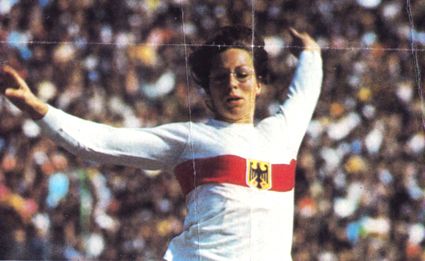

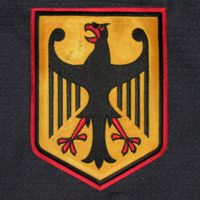 AAA
AAA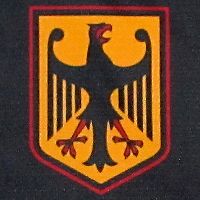
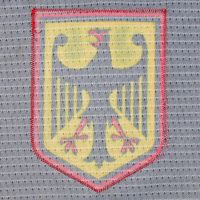
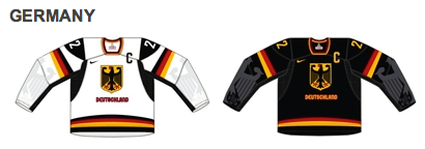
The Germany National Ice Hockey Team is currently ranked 12th in the IIHF World Rankings and is coming off a dismal performance in the 2009 World Championships, where they finished 15th out of 16 teams and only avoided relegation due to an IIHF stipulation that ensures their participation at the Top Division as hosts of the 2010 tournament in May.
Based on their status outside the top nine ranked countries, Germany was obligated to participate in the Olympic Qualification process, a series of tournaments that date back to September of 2008. The host Germans were able to advance to the main tournament in Vancouver by going undefeated in their group which consisted of Japan, Slovenia and Austria.
The Germans have participated in the Olympics in ice hockey 20 times since 1928, with nine of those being as Germany. Three of the teams were called the United Team of Germany during the split between East and West Germany in 1956, 1960 and 1964, but it was actually just the West Germany Team, which defeated the East German team for the right to represent all of Germany as one "United" team.
Following that ill-fated "united" concept, Germans have also participated seven times as West Germany and once as East Germany in 1968, the only time West Germany and East Germany both sent teams to the same Olympic Games.
Their best results have been bronze medals in 1932 as Germany and in 1976 as West Germany.
Aside from their poor showing in 2009, the Germans are regular participants in the World Championships, having been in the Top Division of the World Championships every year since the reunification of Germany in 1991 except three, with two of those years earning promotion back to the Top Division. Their best finish during that time period was a 5th place in 1993. While not considered one of the elite countries in hockey, they are just outside of the top group and have been invited to participate in the eight team World Cup of Hockey both times it has been held.
Germany enters the 2010 Olympics with seven NHLers on its roster, including Thomas Greiss of San Jose, Christian Ehrhoff of Vancouver, Dennis Seidenberg of Florida, Marcel Goc of Nashville, Jochen Hecht of Buffalo and Marco Sturm of Boston. Surprisingly, Christoph Schubert of Atlanta, a past Olympian, was left off the squad. Look for him to possibly be added if there are any roster adjustments due to injury leading up to the games, as was he case with Hecht.
Hecht, in fact, was one who missed the 2006 Olympics in Torino, Italy, due to suffering an injury in the final NHL game prior to the Olympics. Sturm, who as to captain the team, also pulled out with an injury just prior to Torino, scuttling any hopes for success the Germans had in 2006 as they finished 10th out of the 12 teams.
A challenge for Germany, which faces many of the lower ranked countries when naming their teams is one of loyalty, as the team the competes in the Olympic Qualification Process seldom include players otherwise unavailable due to their NHL commitments.
"It's a bit of a tightrope act," said Uwe Krupp said Germany's coach and general manager. "We can't simply take all our NHL players because they're NHL players. What about the guys who were here all through the qualification process and got us into the Olympics?" Do I tell them to just step aside? We have ten players in the NHL and AHL, but none of them took part in qualifying," Krupp said, referring the qualification tournament in Hanover, Germany last February that got Germany into the Olympics with narrow 2-1 wins over Austria and Slovenia using a roster composed entirely of players that were domestically based in the German hockey league, the DEL.
"it could be disruptive if I left off some of the guy who battled to get us into the Olympic," Krugg said, "and whatever chance of success we have in Vancouver will be the result of our whole team, not a few individuals."
Since Germany did not dominate their qualification group, they seem to be in no position to put loyalty ahead of talent and would do themselves a huge favor by bringing the most talented squad possible to Vancouver in order to compete with teams at level of Sweden, Finland and Belarus who make up the rest of Group C.
While they are not expected to win a medal, their performance in Vancouver is an opportunity to create some excitement leading up to the 2010 World Championships, for which they are hosts. The tournament will kick off May 7th with a game against the United States at the Vetlins Arena, a soccer stadium with a retractable roof, expected to be played in front of a world record crowd of 76,000.

Today's featured jersey is a story all it's own.
It is a Nike 1999 Germany National Team Michael Bakos jersey worn in the 1999 World Junior Championships B Pool. In the collecting hobby it is known as "The Double Eagle" jersey, due to it originally being designed for the 1998 Nagano Olympic Games with the eagle head on the crest facing to the left.
The jersey design began in the summer of 1996 in order to meet production deadlines for the summer of 1997 six to nine months prior to the Olympics in February of 1998. At the time, such reference options as GettyImages.com or the image search functions found on Google or Yahoo did not exist and the designer used books in the Nike sports library for inspiration. Photos were found of a German long jumper from he late 70's as well as a crowd shot from a German National Team soccer match.


The eagle head in the long jumper photo was oriented to the athlete's left and the waving flags held by the soccer fans were seen from both sides, and as a result, the eagles were seen facing both left and right. The long jump photo in particular, lacked any signage or numbering of any sort to give a clear indication of the orientation of the original photo.
Other reference materials showed the eagle heads facing both ways and the designer proceeded to orient the eagle head to the left as shown in the photo of the long jumper.
Of note, the eagle was given four feathers on its wings to distance the Nike produced jerseys from the familiar, iconic three-stripes of competitor Adidas.
The Nike legal department, the German Ice Hockey Federation (the DEB) and the German culture office of the government all signed off on the design of the jersey, which included the logo, and it then went into production.
Press photos were then released of the jersey with the left facing eagle crest, shown here modeled by national team goaltender Olaf Kolzig.
Then the phone rang at Nike customer service...
Someone, reportedly from the southern United States, perhaps near Atlanta, claimed the left facing eagle was the style used by the Nazi party in World War II and the proper eagle now would only be one that faced to the right.
Meetings were called and the designer was questioned about the design and why it faced to the left. A German employee at Nike backed up the designer, saying it was fine that way and it was pointed out that not only had the Nike legal department approved it, but so had the Germans, including a branch of their own government, where one would expect sensitivities to Nazi imagery would be at its highest.
Still, not wanting to risk any bad publicity, due to concerns at the time over sweat shops in Asia producing Nike goods and recent issues Reebok had undergone with Muslims over a clothing design, it was decided to alter the jerseys to re-orient the eagle so that it would now be looking to the right.
A new set of right-facing eagle patches were quickly manufactured and sewn over the original dye-sublimated logo prior to the Olympics in February. None of the jerseys were sold at retail with the over-patching, so all of the "double eagle" jerseys in existence are game worn examples.
Below is a comparison of the embroidered right-facing eagle crest and the original sublimated left-facing crest hidden underneath the embroidered version sewn over it.
 AAA
AAA
To see if a 1998 era German National team jersey is a "Double Eagle" jersey, simply turn the jersey inside out and look to see the original sublimated crest showing through the fabric. The eagle will be facing right, as shown below, since the crest is being seen in the reverse from the back.

Incidentally, a quick search on Google Images for "Nazi eagle emblem" will show a split between eagles facing both right and left, clearly indicating no distinct preference and a likely majority of the ones we believe to be authentic to the 1940's at first glance actually facing to the right!
Here is a look at the jerseys that Germany will be wearing in the 2010 Olympics in Vancouver. The always attractive German jerseys most unique feature is the eagle from their main crest ghosted on the lower sleeves of their jerseys.

Dasherboard: For those of you who did not read yesterday's look at the format for the Olympic tournament, this year's format is a bit complex in places and somewhat difficult to explain quickly and easily, but it does have some ramifications on how the early part of the tournament will be played that we feel is important.
The format calls for three groups, A, B and C, which consist of four teams each, playing a round robin of just three games in the Preliminary Round. At the conclusion of the Preliminary Round, all the teams will be ranked 1-12, in order of;
- higher position in the group
- higher number of points
- better goal difference
- higher number of goals scored
- better 2009 IIHF World Ranking
The top four teams will then receive byes into the Quarterfinals with the remaining eight teams, ranked 5-12, being paired off in the Secondary Round, which consists of four knockout games to be played on February 23rd, with the winners advancing to the Quarterfinals against the top four teams, which will be played the very next day, February 24th.
The discrepancy between there being three groups but four byes into the Quarterfinals is an unfortunate choice of format, which was chosen to compress the tournament into a shorter time frame than the 16 team, four group format of the World Championships.
Regrettably, the format of the tournament is stacked against the weaker teams, like Norway, as the top teams will be looking to pour it on in the preliminary round since the short schedule of just three games in the Preliminary Round puts a greater emphasis on goal differential which will undoubtedly be a factor to determine who gets the coveted bye into the Quarterfinals between the three second place finishers, as well as the most favorable matchup in the secondary round on February 23rd for a berth in the Quarterfinals.
In plain English, expect the top team in each group to finish the preliminary round with a 3-0 record and second place teams in each group to finish at 2-1. Therefore, the all-important tie breaker then becomes goal differential, encouraging, if not requiring, the top countries to kick the living snot out of the weaker ones.
For example, assume the United States, the Czech Republic and Finland each finish second in their groups with a 2-1 record. It will be in the United States best interest to try to pummel Norway 10-1 in the hopes that a +9 difference in goals will be enough to overcome the Czech's ability to pound Latvia and Finland's ability to crush Germany, since the one team able to outscore the other teams in its group by the greatest margin, will get an all important extra day off heading into the Quarterfinals before having to face one of the other two who will have just played an extra game the day before.
The way the tournament is structured, and the resulting emphasis on goal differential, is unfortunate in the way it rewards the team who can clobber the weaker ones the most, which flies in the face of the sprit of goodwill, sportsmanship and Olympic ideals.
It is really too bad that the Olympic tournament is not in the 16 team format of the World Championships, where the second round of the tournament is an additional round of group play for all surviving teams, without the incentive of byes presented which only encourage greater lopsided scores as a way to earn the byes offered in the Olympic format.
The same argument also applies to the winners of each group. Assuming they all go 3-0, their tiebreaker will also be heavily weighted toward goal differential, with the team achieving the best differential drawing the weakest opponent of the three during the Quarterfinals, which now means two teams each looking to clobber Norway, Lativa and Germany in the Preliminary Round. Say, for example all the favored teams advance out of the Secondary Round except for one upset by Latvia over Switzerland. A better goal differential would mean the difference between playing Latvia instead of Finland in the Quarterfinals based primarily on your ability to score 14 times against Germany a week earlier.
Labels:
2010 Olympics,
Germany
Thursday, February 4, 2010
1956 Soviet Union Genrikh Sidorenkov Jersey
When the Soviet Union won the 1954 World Championships in their first ever international tournament, they shocked the hockey world.
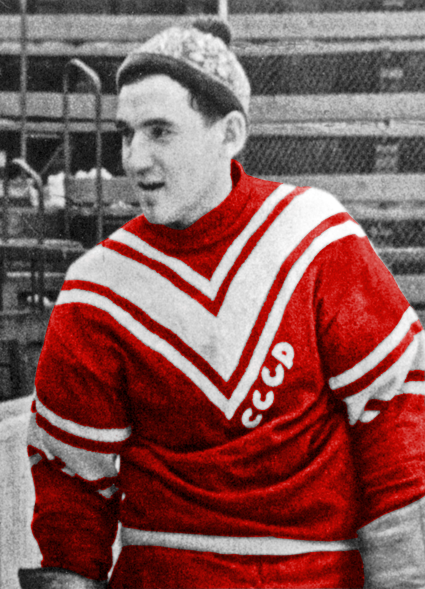
Canada had reclaimed the world title in 1955 and the two countries were set for a showdown at the 1956 Winter Olympics, which were held in Cortina d'Ampezzo, Italy and also counted for that year's World Championship.
Canada moved through Group A with a 3-0 record with wins over Germany (4-0), Austria (23-0) and hosts Italy (3-1), while the Soviet Union finished atop Group C with a pair of wins over Sweden (5-1) and Switzerland (10-3) as both teams moved into the Final Round along with the United States, Sweden, Czechoslovakia and Germany.
On January 30th, both teams got off to the desired starts with Canada winning 6-3 over Czechoslovakia and the Soviets beating Sweden 4-1.
The next day the Soviets put some distance between themselves and Canada with a 8-0 defeat of Germany while Canada lost to the United States 4-1, allowing the USA to keep pace with the Soviets at the top of the standings.
The United States put pressure on the Soviets by winning their third game in three days by downing Sweden 6-1.
February 2nd saw the Soviet Union regain a tie with the USA with a 7-4 win over rivals Czechoslovakia and Canada pummeled Germany 10-0.
The following day Canada remained two points back of the top spot with a 6-2 win over Sweden and the key matchup between the Americans and Soviets went the way of the Soviets 4-0, setting up their awaited showdown with Canada on the final day of the tournament on this date in 1956.
The standing then stood at the Soviet Union at 4-0 for 8 points, and both Canada and the United States at 3-1 tied with 6 points. The United States took care of their part with a 9-4 win over Czechoslovakia and Canada needed a win to keep their gold medal hopes alive.
The decisive game was played outdoors in front of a sell-out crowd of 12,700 spectators. The first period was played scoreless although Canada dominated the action. After controlling play again in the second, Canada was stunned when Yuri Krylov drew first blood for the Soviet Union with a goal at 6:20 of the second. The score remained through the completion of the middle period, but the Soviets put themselves in a strong position just 37 seconds into the third period to take a 2-0 lead.
Soviet goaltender Nikolai Puchkov held the Canadians at bay for the remainder of the game as the Soviet Union won the game, despite being outshot 23-9, to complete the Final Round, and the tournament, undefeated to capture their first Olympic gold medal.
With their victory on the last day the United States earned the silver medal while Canada was awarded the bronze, it's lowest placing since hockey became and Olympic sport in 1920.
The Soviet victory was the beginning of an era of dominance that would stretch from 1956 to 1992, as the Soviets took home gold every four years, except in 1960 and 1980 when the United States won on home soil, to capture eight out of ten championships.
Today's featured jersey is a 1956 Soviet National Team Genrikh Sidorenkov jersey as worn during the 1956 Winter Olympics when the Soviet Union won their first Olympic gold medal.
This jersey was the one chosen by Russia to wear as their throwback style for the 2008 World Championships, when each country wore a jersey from their past as part of the IIHF 100th Anniversary celebrations on May 2, 2008 in a 7-2 win over Italy. A jersey that was inexplicably never sold at retail despite being worn by NHL stars Alexander Ovechkin and Ilya Kovalchuk plus the rest of the 2008 gold medal winning Russian squad that certainly would have guaranteed enough sales to justify putting this strikingly beautiful jersey into production.
Sidorenkov was a nine time member of the Soviet National Team who scored 15 goals while playing defense in 107 games. He was a Soviet All-Star in 1959, 1960 and 1961. In addition to his time with the National Team, he also played in 310 games, scoring 42 goals, in the Soviet League with the Soviet Wings (1948-1951), CSKA Moscow (1951-1962, 1964-1966) and SKA Leningrad (1962-1964).
He was inducted into the Soviet Hockey Hall of Fame in 1956 when he received the Merited Sports Master Award. In addition to his gold medal in 1956, he also won a bronze medal at the 1960 Olympics. At the World Championships, Sidorenkov won a gold medal in 1954, silver in 1957, 1958 and 1959 and a bronze in 1961.

Today's video selection features the gold medal game from the 1956 Olympics, as the Soviet Union takes on Canada in black and white, followed by the previous contest versus the United States followed again by the game against Canada in glorious living color! We love the number of players wearing stocking caps on the ice and also take notice of the goaltender Puchkov wearing blue hockey pants in contrast to the rest of the team all wearing red ones.
Dasherboard: Tomorrow begins our team by team look at the twelve countries participating in the upcoming 2010 men's Olympic hockey tournament in Vancouver.
We will be looking at the teams by their groups, in ascending order of their current IIHF World Rankings, starting with Group C.
This year's format for the Olympics is a bit complex in places and somewhat difficult to explain quickly and easily, but it does have some ramifications on how the early part of the tournament will be played that we feel is important.
The format calls for three groups, A, B and C, which consist of four teams each, playing a round robin of just three games in the Preliminary Round. At the conclusion of the Preliminary Round, all the teams will be ranked 1-12, in order of;
- higher position in the group
- higher number of points
- better goal difference
- higher number of goals scored
- better 2009 IIHF World Ranking
The top four teams will then receive byes into the Quarterfinals with the remaining eight teams, ranked 5-12, being paired off in the Secondary Round, which consists of four knockout games to be played on February 23rd, with the winners advancing to the Quarterfinals against the top four teams, which will be played the very next day, February 24th.
The discrepancy between there being three groups but four byes into the Quarterfinals is an unfortunate choice of format, which was chosen to compress the tournament into a shorter time frame than the 16 team, four group format of the World Championships.
Regrettably, the format of the tournament is stacked against the weaker teams, like Norway, as the top teams will be looking to pour it on in the preliminary round since the short schedule of just three games in the Preliminary Round puts a greater emphasis on goal differential which will undoubtedly be a factor to determine who gets the coveted bye into the Quarterfinals between the three second place finishers, as well as the most favorable matchup in the secondary round on February 23rd for a berth in the Quarterfinals.
In plain English, expect the top team in each group to finish the preliminary round with a 3-0 record and second place teams in each group to finish at 2-1. Therefore, the all-important tie breaker then becomes goal differential, encouraging, if not requiring, the top countries to kick the living snot out of the weaker ones.
For example, assume the United States, the Czech Republic and Finland each finish second in their groups with a 2-1 record. It will be in the United States best interest to try to pummel Norway 10-1 in the hopes that a +9 difference in goals will be enough to overcome the Czech's ability to pound Latvia and Finland's ability to crush Germany, since the one team able to outscore the other teams in it's group by the greatest margin, will get an all important extra day off heading into the Quarterfinals before having to face one of the other two who will have just played an extra game the day before.
The way the tournament is structured, and the resulting emphasis on goal differential, is unfortunate in the way it rewards the team who can clobber the weaker ones the most, which flies in the face of the sprit of goodwill, sportsmanship and Olympic ideals.
It's really too bad that the Olympic tournament is not in the 16 team format of the World Championships, where the second round of the tournament is an additional round of group play for all surviving teams, without the incentive of byes presented which only encourage greater lopsided scores as a way to earn the byes offered in the Olympic format.
The same argument also applies to the winners of each group. Assuming they all go 3-0, their tiebreaker will also be heavily weighted toward goal differential, with the team achieving the best differential drawing the weakest opponent of the three during the Quarterfinals, which now means two teams each looking to clobber Norway, Lativa and Germany in the Preliminary Round. Say, for example all the team's advance except for one upset. A better goal differential would mean the difference between playing Latvia instead of Finland in the Quarterfinals based primarily on your ability to score 14 times against Germany a week earlier.
Labels:
Sidorenkov Genrikh,
Soviet Union
Wednesday, February 3, 2010
1982-83 Vancouver Canucks Tiger Williams Jersey
Born on this date in 1954, Dave "Tiger" Williams went on to become one of the most feared players in NHL history.
Originally drafted in the second round, 31st overall, by the Toronto Maple Leafs in the 1974 Amateur Draft. He made his NHL debut on January 7, 1975 and played there six years, racking up penalty minutes by the bushel, as he led the team every season he was in Toronto, regardless of the number of games played. In just 42 games in his rookie season, Williams spent 187 minutes in the penalty box, while contributing 10 goals and 29 points.
Williams would lead the league in penalty minutes in both 1976-77, with 338, and again in 1978-79, with 298. Williams, however, was not an entirely one-dimensional player like many of the enforcers of today, as he hovered around the 20 goal mark every year while with the Maple Leafs and hit a high of 50 points in 1978.
Williams was traded to the Vancouver Canucks during the 1979-80 season, having already scored 22 goals in 55 games in Toronto. He would add another 8 in 23 games after joining the Canucks.
The 1980-81 season saw Williams hit career highs with 35 goals and 62 points despite also serving a league leading 343 minutes in the penalty box, the equivalent of nearly six full games. Assuming 16 minutes of ice time a night, it's actually the equal of spending over 21 full games off the ice! Williams also played in the NHL All-Star Game for the only time in his career that season.
In addition to leading the Canucks with the expected penalty minutes, Williams' 35 also led the Canucks in goals that season. When was the last time that ever happened?
Following that season Williams offensive output would decline for the rest of his career, only reaching 20 goals once more, but his trips to the penalty box would continue unabated. During his four seasons in Vancouver, he would average 310 minutes in penalties while leading the Canucks each season.
Prior to the 1984-85 season, the Canucks would deal Williams to the Detroit Red Wings, where he would play just 55 games before another deal in March that sent him to the Los Angeles Kings for the remainder of the season. Two full seasons in Los Angeles saw him wear a path in the ice to the penalty box with first 320 minutes and then a single season high of 358 minutes while leading the Kings in penalty minutes both seasons.
After just two games with the Kings in 1987-88, he was traded one final time to the Hartford Whalers, where he would play 26 games before calling it a career.
Williams would finish with 962 NHL games played, 241 goals, 272 assists for 513 points and as the all time NHL leader with 3966 career penalty minutes. Additionally, Williams played in 83 playoff games, scoring 12 goals and 23 assists for 35 points plus 455 penalty minutes, an average of 5.5 per game, something not seen in the modern NHL where fighting all but vanishes in the playoffs.
Today's featured jersey is a Mitchell and Ness 1982-83 Vancouver Canucks Tiger Williams jersey. Mitchell and Ness jerseys are made to a high standard, but run quite long when compared to your average CCM or Nike jersey. We're not a fan of them embroidering their logo so prominently on the back of their jerseys, as they have never been a supplier of jerseys to an NHL club.
From the Canucks inception in 1970-71 to 1977-78 the Canucks wore blue and green jerseys, but in 1978, all that came to an abrupt end.
Before the 1978-79 season the Canucks hired a professional psychologist to redesign their uniforms. The old colors were said to be "too bland, too tranquil and did not inspire emotion." The result was the "V" design, suggesting "victory" according to the designer, one of the strangest, yet most unforgettable jerseys to ever see the ice in an NHL contest.
The bright orange was said to "evoke passion and aggression" while the black road jersey was supposed to instill fear in the opposition.
The jerseys featured no main team logo on the front, but instead the giant "V" shape done in bright orange and yellow on a black jersey. The sleeves also featured smaller "V" shapes midway down the arm with a new "Flying Skate" logo for the shoulders.
The "V" shape was not limited to just the jerseys either, as the breezers had giant multi-colored "V's" as well. During the first year these jerseys were worn, they even had "V" shaped stripes on the socks.
The Canucks introduced the jerseys, which none of the players had seen prior to the game, at the season opener in Minnesota. As Stan Smyl said, "I've never been ashamed to wear the Canuck's uniform, but that night none of us wanted to leave the dressing room."
They were met with much derision around the NHL and were often referred to as "those Halloween suits". Vancouver nearly got the last laugh however, as they made it all the way to the Stanley Cup Finals in 1982 before running into the New York Islanders dynasty which was in full stride. Time has settled on the nickname of "The Flying V" for these jerseys.
The basic jersey produced in 1978 remained in use until the 1984-85 season, but with a few adjustments along the way, such as a change in color for the names on the back, relocating the very unconventional sleeve numbers from the wrists to the shoulders and eventually evolving from one color names and numbers to two colors for both, as seen on today's featured jersey.
Some feel that the Canucks have never gotten it right, as the original logo was too simplistic, the Flying V was too hideous, the Flying Skate was too busy and the Orca logo too corporate, as the Canucks were owned by Orca Bay Entertainment when the Orca/Killer Whale logo was adopted.
Maxim magazine, which I only read for the articles, rated the Flying V jerseys as "The Worst Sports Uniform" in any sport.
Despite others often ranking this as one of the top three, if not the worst, jerseys of all time, we are actually fans of the whole concept of trying to design a jersey in an effort to aid your team in victory. It took some bold thinking and a lot of guts for the designer to create this jeresy and then even more for the club to support the concept and stick with it for seven seasons.
We cannot imagine anyone in the NHL being bold enough to risk the large amounts of income clubs rely on from the marketing of jerseys to try something so far outside the norm in the marketing driven world of the modern NHL.
The "Flying V" jerseys are a curiosity, as no other team followed them down the same path, leaving the "Flying V" as a truly unique chapter in NHL history.
Today's rock 'em, sock 'em highlights begin with Tiger Williams taking on Dave Schultz of the Flyers. Not the greatest fight of all time, but look at show short the glass is!
Here is a profile of Williams, which includes his infamous goal celebration of riding his stick after scoring.
Straight out of the movie Slap Shot, Williams gets into a fight with the Boston Bruins Stan Jonathan, while still sitting on the bench!
We are at a loss for words to describe this feature on Williams from the CBC in 1979. It actually have us a headache, it was that creepy. You've been warned.
Labels:
Vancouver Canucks,
Williams Tiger
Tuesday, February 2, 2010
1977-78 Philadelphia Flyers Gary Dornhoefer Jersey
Born on this date in 1943, Gary Dornhoefer played for both the Boston Bruins and Philadelphia Flyers during his 14 season NHL career.
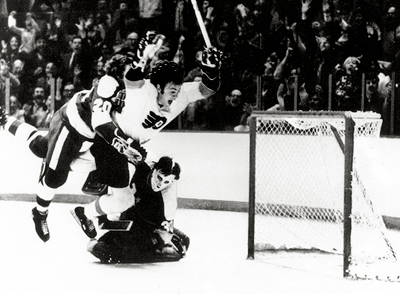
Dornhoefer scoring his dramatic goal in the 1973 playoffs
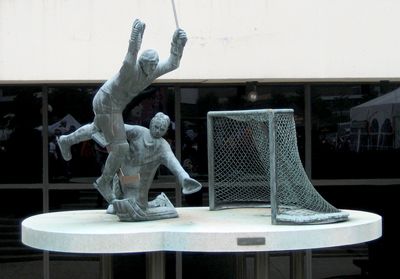
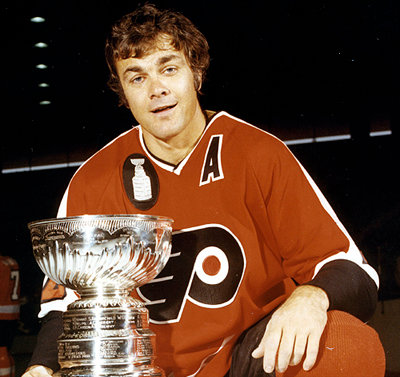
Dornhoefer posing with the Stanley Cup while wearing the celebratory Stanley Cup champions patch, which was only worn by the team during the following preseason until the patch was removed at the player's request, as they feared it would provide motivation for their opponents
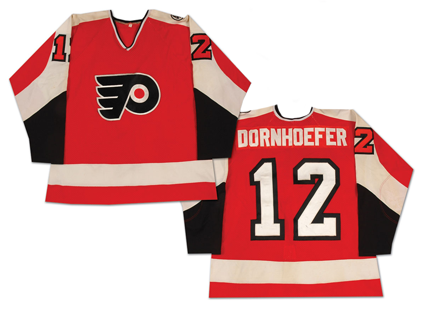
Dornhoefer made his NHL debut with Boston in the 1963-64 season, getting into 32 games while scoring 22 points. Dornhoefer found it tough to crack the Bruins lineup though, as the number of games played each season with the Bruins declined to 20 games the next year, followed by just 10 games followed by none in 1966-67, as he spent the entire season playing for the Hershey Bears in the American Hockey League.
It's hard to imagine any player benefiting from the NHL expansion and 100% increase in NHL jobs more than Dornhoefer, who was selected by the Philadelphia Flyers in the 1967 NHL Expansion Draft, and would spend the remainder of his career with the Flyers.
Never one to be considered a flashy goal scorer, Dornhoefer was a perfect fit for the Flyers who valued his gritty style, all-out tenacity and ruggedness.
His first season in Philadelphia saw him score 43 points for the expansion Flyers and rack up 143 penalty minutes. That set the tone for what the Flyers could expect from Dornhoefer annually, as he regularly scored between 40 and 60 points and averaged 120 penalty minutes.
He did have one notable offensive season in 1972-73 when he hit the 30-goal plateau for the only time and scored 79 total points, 16 more than any other season of his career. The points did not affect his rugged play, as he totaled his second highest time in the penalty box of his career, with 168 minutes, behind only the 183 from the season before.
The most famous play of his career came in the 1973 playoffs in overtime of Game 5 against the Minnesota North Stars when he raced down the boards, eluding first Bill Goldsworthy and then Barry Gibbs as he cut in front of the net. He then pulled the puck from his forehand to his backhand as he moved past Gibbs before shooting the puck past goaltender Cesare Maniago just before Tom Reid could upend him.

Dornhoefer scoring his dramatic goal in the 1973 playoffs
The spectacular goal all but clinched the series for the Flyers giving them a 3-2 lead in games, a series they would go on to win 4-2 for the first playoff series win in team history.
“I don’t even know how I scored. I just remember getting the puck at center ice, and fortunately it stayed right with me. You could try that play again a hundred times and it wouldn’t work,” Dornhoefer recounted afterwards.
Dornhoefer's goal was immortalized as a statue outside the Flyers original arena, The Spectrum.

Dornhoefer's famous goal immortalized as a statue
The loss to the Montreal Canadiens in the playoffs the year before only increased the Flyers hunger and The Broad Street Bullies would take on the league with their elbows up, sticks high and fists flying, as they won the West Division with a league leading 1,750 penalty minutes, an average of over 22 minutes a game, 7 minutes more per game than the next closest team and 10 more per game than the league average of 12.
During the playoffs, the Flyers would eliminate the Atlanta Flames in the opening round 4-0, outlast the New York Rangers 4-3 and defeat the Boston Bruins 4-2 to become the first expansion team to capture the Stanley Cup.

Dornhoefer posing with the Stanley Cup while wearing the celebratory Stanley Cup champions patch, which was only worn by the team during the following preseason until the patch was removed at the player's request, as they feared it would provide motivation for their opponents
Dornhoefer and the Flyers would defend the cup again in 1975, repeating their same pattern as the year before by sweeping the Toronto Maple Leafs, outlasting the New York Islanders in seven and beating the Buffalo Sabres 4-2 for their second consecutive championship. During the regular season they would up their penalty minute total to 1,969 (an average of 24.6 per game) and again lead the league by a wide margin, nearly 700 minutes more than the next closest club.
After two more full seasons, injuries would begin to take it's toll, causing Dornhoefer to miss half of he 1977-78 season and retire following the playoffs that year. His final career totals were 787 games, 214 goals, 328 assists and 542 points. Additionally, he would score 36 points in 80 playoff games and win a pair of Stanley Cups.
Today's featured jersey is a 1977-78 Philadelphia Flyers Gary Dornhoefer jersey, as worn during the final season 0f his career.
This jersey features the #4 memorial patch for former Flyer Barry Ashbee, who was on the club the season they won the 1974 Stanley Cup, but saw his career end six games into the playoffs when he was struck in the eye by a puck.
Ashbee became an assistant coach with the Flyers for 1974-75, a season which saw the Flyers retire his number 4 and win another Stanley Cup. Ashbee was diagnosed with leukemia in April of 1977 and died a month later, leading to him being memorialized on the Flyers jerseys in 1977-78.

Today's video selections begin with a brief interview segment with Dornhoefer.
Here is a scrap between Dornhoefer and Brad Park, with the Flyers wearing their odd black names on a white nameplate on their orange jerseys, a look they have brought back with their current orange jerseys and again with their 2010 Winter Classic jerseys.
Finally, here is the call as the Flyers capture their first Stanley Cup.
Labels:
Dornhoefer Gary,
Philadelphia Flyers
Subscribe to:
Comments (Atom)

